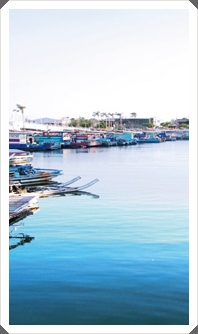 |
 Linyuan Township is located on the southwest coastal region of Taiwan (120.24 degrees longitude and 22.30 degrees latitude), it is the southernmost Gaobing River estuary in the southernmost tip of Kaohsiung County. It is bordered by Daliao Township in the north, Fongshan Hill and Kaohsiung City’s Siaogang District in the west, Gaobing River and Pingtung County’s Sinyuan Township in the east and the Taiwan Straits and Liouciou Township (Little Liouciou) in the southwest. Linyuan Township is situated in the abundant forest side of Fongshan, therefore it is called Linzaibian (the forest side). Linyuan Township is located on the southwest coastal region of Taiwan (120.24 degrees longitude and 22.30 degrees latitude), it is the southernmost Gaobing River estuary in the southernmost tip of Kaohsiung County. It is bordered by Daliao Township in the north, Fongshan Hill and Kaohsiung City’s Siaogang District in the west, Gaobing River and Pingtung County’s Sinyuan Township in the east and the Taiwan Straits and Liouciou Township (Little Liouciou) in the southwest. Linyuan Township is situated in the abundant forest side of Fongshan, therefore it is called Linzaibian (the forest side).
This was the commercial, administrative and cultural center of Siaojhu Li during the Mingcing Dynasty; during the Cing Dynasty Siaojhu Li was renamed as Siaojhu Upper Li and Siaojhu Lower Li, the name Linyuan did not yet exist. In the 9th year of the Taisho era (1920), Kaohsiung Chou was created, and the geographical names in Taiwan was reformed by abbreviating the three word names to two word names. Therefore, according to regulations, the “Zai” word was removed from Linzaibian to become Linbian, however it had the same name as Linbian in Pingtung.
Most people who lived in Linyuan came from Jhangjhoufu in Fujian, the Sie Family Wanggong (Duke) is a traditional belief originated from the immigrants of Jhangjhou, it is also the guardian angel of local citizens in Linzaibian.
In accordance with the Guanlin Village (now known as lower Lin) and Yuanjhong Village (now known as upper Lin) near the ancient temple in Jhangjhoufu, thus the words of Lin and Yuan were used as its name in memory of the old hometown. Since the Japanese pronunciation of Linyuan is similar to that of Chinese, which also has a good connotation, hence it was reamed Linyuan and the Linyuan Village was created. The name of Linyuan has been used since then.
|
 |